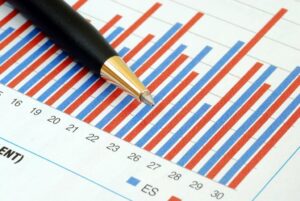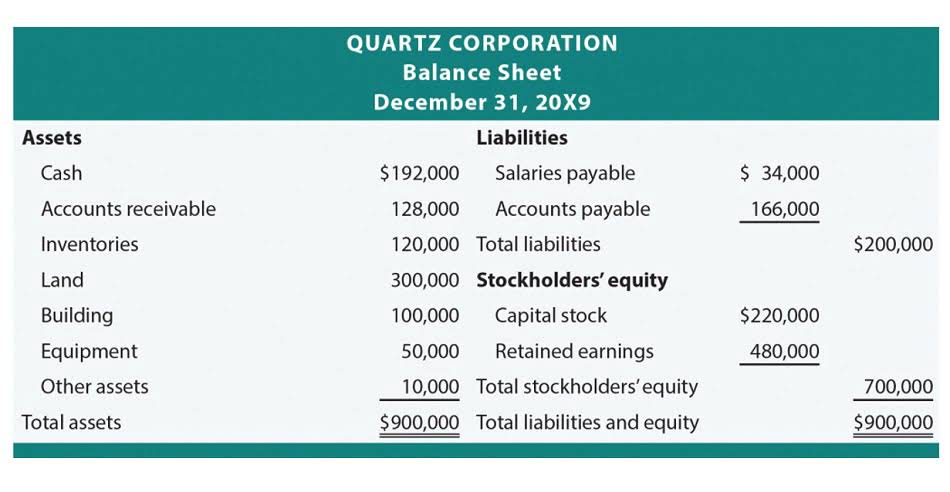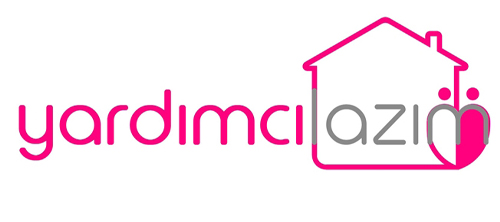
Additionally, we will provide practical examples to help illustrate how to calculate stockholders’ equity and interpret its key components in the context of real-world scenarios. A positive stockholders’ equity indicates that a company has sufficient assets to cover its liabilities. This is often considered a favorable sign for potential investors as it implies financial stability and strength. Conversely, negative stockholders’ equity may indicate an impending insolvency situation, where the total liabilities exceed the value of assets. Retained earnings can be found on the income statement, which reports a company’s revenues, expenses, gains, losses, and net income for a specific period. You’d need to be able to read a balance sheet to find the company’s total assets and liabilities in order to make these calculations.
What are the Advantages of the Balance Sheet? Explained
Another case study could focus on a company’s response to significant shifts in its capital structure, such as issuing new shares or repurchasing existing ones. Interpreting stockholders’ equity involves examining various components, including common stock, preferred stock, retained earnings, and additional paid-in capital. Each element provides valuable information about the company’s funding sources and profit retention strategies. A thorough analysis can reveal trends in equity financing and the company’s approach to https://www.bookstime.com/ balancing debt and equity.
- After selling her business, she moved into marketing for nonprofits and now manages volunteers at a large medical association.
- A statement of shareholders’ equity is a valuable tool for gauging a business’s health for the following reasons.
- Treasury stock refers to shares that were once part of the outstanding shares of a company but were subsequently repurchased by the company itself.
- Sometimes, a venture capitalist will take a seat on the board of directors for its portfolio companies, ensuring an active role in guiding the company.
- Stockholders’ equity represents the residual interest in the assets of a company after all liabilities have been paid off.
- A company can choose to distribute profits to its shareholders in the form of dividends.
Additional paid-in capital (APIC)

A balance on the right side (credit side) of an account in the general ledger. The standards, rules, guidelines, and industry-specific requirements for financial reporting. If a supplier sold merchandise to a company on credit, the supplier is a creditor. It’s important to remember that stockholders’ income summary equity shouldn’t be analyzed in isolation. For the past 52 years, Harold Averkamp (CPA, MBA) hasworked as an accounting supervisor, manager, consultant, university instructor, and innovator in teaching accounting online. For the past 52 years, Harold Averkamp (CPA, MBA) has worked as an accounting supervisor, manager, consultant, university instructor, and innovator in teaching accounting online.
- Conversely, negative equity could suggest that the liabilities outweigh the assets, indicating an impending bankruptcy or insolvency.
- By examining the two main components – share capital and retained earnings – investors can gain valuable insights into a business’s funding structure and profitability.
- Shareholder equity gives you a clearer picture of a company’s financial position – beyond the share price .
- It can also help you find and attract investors — who will undoubtedly want to review this statement before injecting capital into your business.
- Calculating stockholders’ equity can give investors a better idea of what assets might be left (and paid out to shareholders) once all outstanding liabilities or debts are satisfied.
Earnings Per Share

Stockholders’ equity includes all assets and liabilities, making it a more comprehensive measure of a company’s financial position. A company with positive equity demonstrates that its total assets are greater than its total liabilities. This means the company has sufficient funds to pay off all debts and still have assets remaining for its stockholders. Positive equity is considered a favorable indicator of financial stability, as it implies that shareholders will receive a return on their investment should the business liquidate.

What is additional paid-in capital?

It looks at how efficiently a company uses its equity to generate profits. While that’s a step further, it builds directly on what we’ve just covered. In contrast, early-stage companies with a significant number of promising growth opportunities are far more likely to keep the cash (i.e. for reinvestments). Once all liabilities are taken care of in the hypothetical liquidation, the residual value, or “book value of equity,” represents the remaining proceeds that could be distributed among shareholders.

If a corporation has a limited amount of cash, but needs an asset or some services, the corporation might issue some new shares of stock in exchange for the items. When shares of stock are issued for noncash items, the items and the stock must be recorded on the books at the fair market value at the time of the exchange. Since both the stock given up and the asset or services received may have market values, accountants record the fair market value of the one that is more clearly determinable (more objective and verifiable). Since the balance sheet amounts reflect the cost and matching principles, a corporation’s book value is not the same amount as its market value. For example, the most successful brand names and logos of a consumer products company may have been developed in-house. Since they were not purchased, their high market values are not included in the corporation’s assets.
- An equity takeout is taking money out of a property or borrowing money against it.
- But an important distinction is that the decline in equity value occurs due to the “book value of equity”, rather than the market value.
- For example, if the ROE is 25%, this means that for every euro invested in share capital, 25 euro cents have been generated.
- Before making any investment, you’ll want to perform the proper analysis or find an advisor who can help you make those decisions.
- In theory, Shareholders’ Equity can be used to evaluate the cash held by a company.
- The following examples feature the shareholders’ equity statement and show how to calculate shareholders’ equity with respect to all the above-mentioned components.
What Retained Earnings Reveal About a Company
- Shareholder equity represents the total amount of capital in a company that is directly linked to its owners.
- The shareholders’ returns are proportional to their investment in a firm.
- Otherwise, an alternative approach to calculating shareholders’ equity is to add up the following line items, which we’ll explain in more detail soon.
- A high stockholders’ equity means the company has more resources to finance its growth, attract investors and increase credibility and confidence in the market.
- Knowing how to read them can give you a clearer view of the road ahead – no noise, just substance.
If the corporation receives more than the par amount, the amount greater than par will be recorded in another account such as Paid-in Capital in Excess of Par – Preferred statement of stockholders equity Stock. For example, if one share of 9% preferred stock having a par value of $100 is sold for $101, the following entry will be made. Legally, corporations must have a credit balance in Retained Earnings in order to declare a dividend. Practically, a corporation must also have a cash balance large enough to pay the dividend and still meet upcoming needs, such as asset growth and payments on existing liabilities. Cash dividends (usually referred to as dividends) are a distribution of the corporation’s net income.
